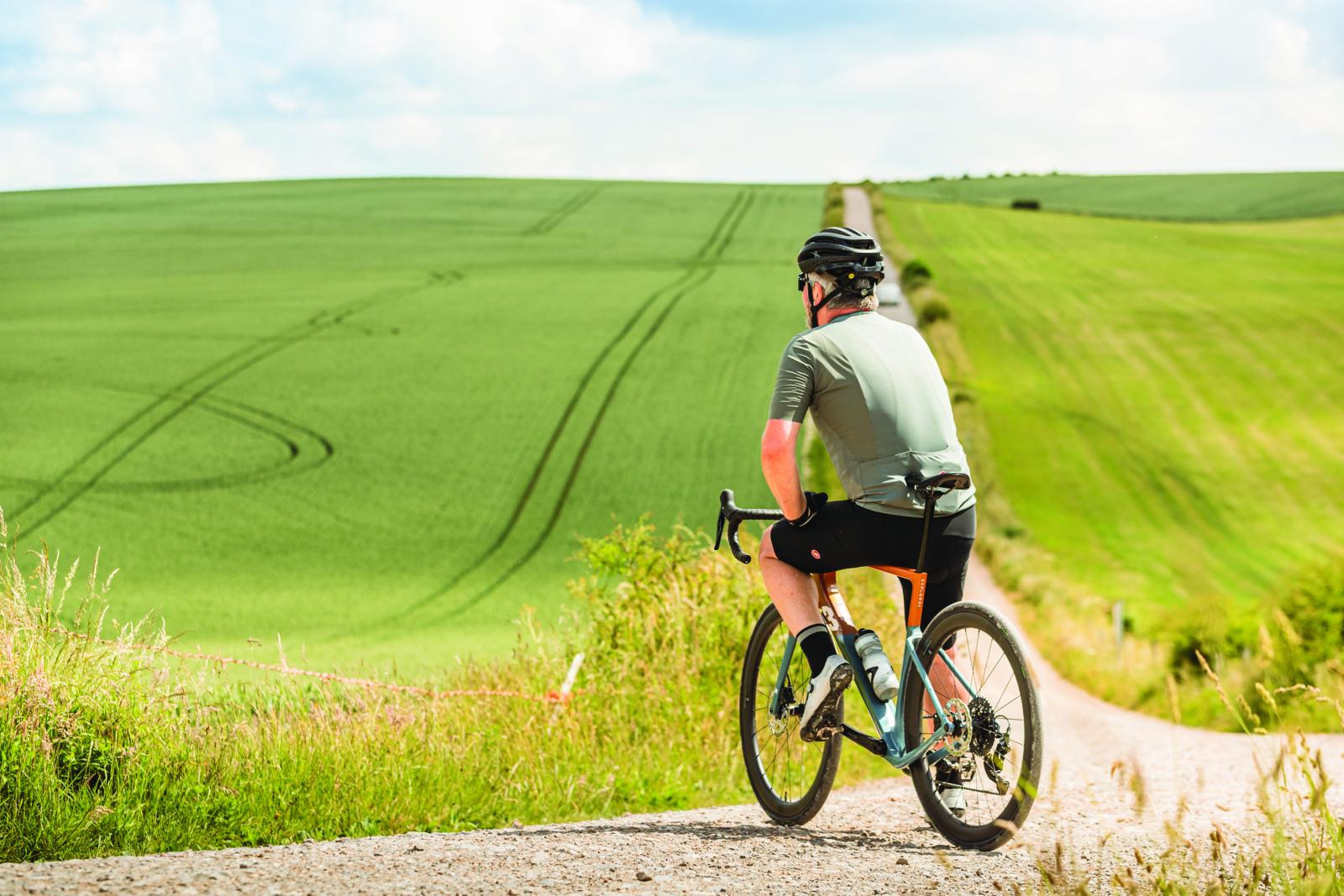The Giant Defy Advanced SL chassis is at the top of an extensive line-up, ranging from a lightweight, lightly priced aluminium machine to three levels of carbon models.
- Best road bike: how to choose the right one for you
- Giant Defy Advanced 2 review
- Giant Defy 3 review
At a claimed 730g (M), the SL is the lightest by some margin, partly due to the integrated seatpost. The post has advantages in that the carbon can be manipulated to save weight over a clamped post and engineered to offer plenty of flex — there is more uninterrupted tube to play with.
The downsides are that it’s cut to fit, so re-sale options are either to a rider of the same size or shorter, and it can make packing your bike tricky — it’ll be a squeeze in some hard cases and padded bags, especially in larger frame sizes.
Being at the top of the tree, the SL0 wears Shimano’s Dura-Ace Di2 groupset paired with RS785 brakes. The combination blends superb shifting of the big mile-friendly 50/34, 11-28 gearing with impeccable braking performance.
Uphill the Defy is responsive, easing forward with every pedal stroke. A lightweight set of carbon wheels helps, with their aero shape offering a speed advantage
The Defy design was one of the earliest adopters of discs, hence the frame has standard quick-release levers front and rear. Plenty of brands will tell you about increased stiffness and better brake/rotor alignment from thru-axles. Although true, the Defy is so well engineered we experienced fault-free running from the discs with no squeaks, rubbing or grinding from the rotors, whatever the weather.
As an endurance bike, you’d expect a soft, cushioning ride, however the SL is anything but. Though that firm feeling doesn’t mean it’s uncomfortable. It does a good job of controlling road vibrations, while communicating plenty of information about the surfaces you’ll be passing over at pace.
The back end starts firm, but becomes increasingly smooth the rougher the surface — we didn’t feel the need to take any avoiding action around medium-size road scars and potholes. In the same situations, the front isn’t quite as capable, partly due to the oversized and super-stiff carbon stem and bar. We’ve tested these separately and found them impressive, but they are firmer than most.
Uphill the Defy is responsive, easing forward with every pedal stroke. A lightweight set of carbon wheels helps, with their aero shape offering a speed advantage. It’s one of those bikes that covers rolling terrain with ease, encouraging you to go that bit further on every ride, potentially turning a quick morning spin into an all-day epic.

When you point the SL0 downhill you’re met with a chassis that’s epically good. Come up to a technical tight corner, dab the brilliant brakes and hit the apex, then power out the other side for the Defy to show itself as a descending superstar on a par with the best full-on race bikes.
The 25mm tyres feel slimmer than their nominal size, partly due to rims that are relatively narrow compared with many of the latest designs. The frame is designed to accommodate 28mm tyres, and to eke out just a bit more smoothness and increased grip we’d like to see those fitted as standard.
But the SL0 is still a truly wonderful ride — fast, agile and capable of big miles thanks to a not-so-aggressive ride position. Though all that engineering and ride quality does come with a hefty price tag.



